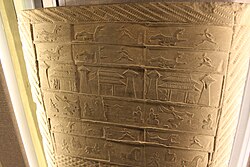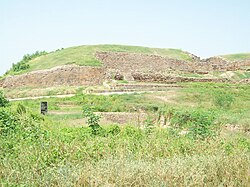Fortress
A fortress is a building designed to be defended, which means it was very hard for enemies to get inside. Fortification kept the people inside safe. There is little difference between a fortress and a castle. Fortresses normally have thick stone walls, thicker but less tall than in castles so artillery cannot break them. There were very small windows, without glass, so that soldiers inside could fire out through them. As time passed, the weapons they used changed, from bow and arrow, crossbow, gun or cannon. Soldiers outside had great difficulty firing into such small windows. The people defending the fortress were also able to drop things like rocks and boiling oil on the heads of those below. Successful attacks were usually sieges.
Fortresses were not designed for comfort. They were dark and often damp. The Tower of London is an example of a fortress.
Fortress Media
Castillo San Felipe del Morro, Puerto Rico. The fortress and walled city of Old San Juan are a UNESCO World Heritage Site.
Maiden Castle in 1935. The Iron Age hillfort was first built in 600 BC.
Han dynasty tomb brick showing gate towers
Remains of a fortified village, Borġ in-Nadur, Malta. Borġ in-Nadur is a notable example of Bronze Age fortifications.
Reconstructed walls of Bibracte, a Gaulish oppidum, showing the construction technique known as murus gallicus. Oppida were large fortified settlements used during the Iron Age.
An ancient casemate wall at Masada.
An interior view of the Aurelian walls near Porta San Sebastiano
Defensive wall of the ancient city of Dholavira, Gujarat 2600 BCE
Jaisalmer Fort, Rajasthan, India
Rock fort of Sigiriya built by King Kashyapa I of Anuradhapura.









